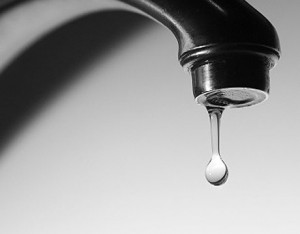Leak Detection

Preventing Leaks
Leaks are often the culprit for unexplained increased consumption, and toilet leaks are the most common. A toilet can waste thousands of gallons of water in a single billing period. Repairing a toilet leak is usually easy and relatively inexpensive to repair.
To check for a leak, remove the top of the tank behind the bowl and put 3-4 drops of food coloring in the tank water. Don’t flush the toilet for an hour or more if possible. Check the water in the toilet bowl; and if the bowl water has been colored with the food coloring, then you have a leak. This type of leak is usually easy to repair by replacing the flapper assembly. If this does not work, you may want to consult a plumber.
Another leak that is common is a “leaky” faucet whether it is inside your home or at an outside faucet.
In order to determine if you have a water leak, read your water meter. Write the reading down and go back and re-read meter approximately 15-20 minutes later and see if any of the numbers on the meter have moved. There is also a leak indicator (a small triangle shape) on most meters which is located in the middle of the meter or on the left hand side of the meter. If the leak indicator is moving and no water is being used, there is a leak somewhere. If there is a cut-off valve at the house, cut water off at cut-off and go back to see if meter is still moving. If so, the leak is in your water line. If not, the leak is probably somewhere in your house.
Water costs money…don’t waste it!
A dripping faucet or fixture can waste 3 gallons a day… A total of 1095 gallons a year.
Conserve water and save money!
Water wastes per gallon in a 24 hour period at 40 pounds pressure:

holes
The average person uses 50-75 gallons of water every day. By becoming waste conscious, you can reduce your usage.
Saving water saves money and also helps protect our most precious resource.

